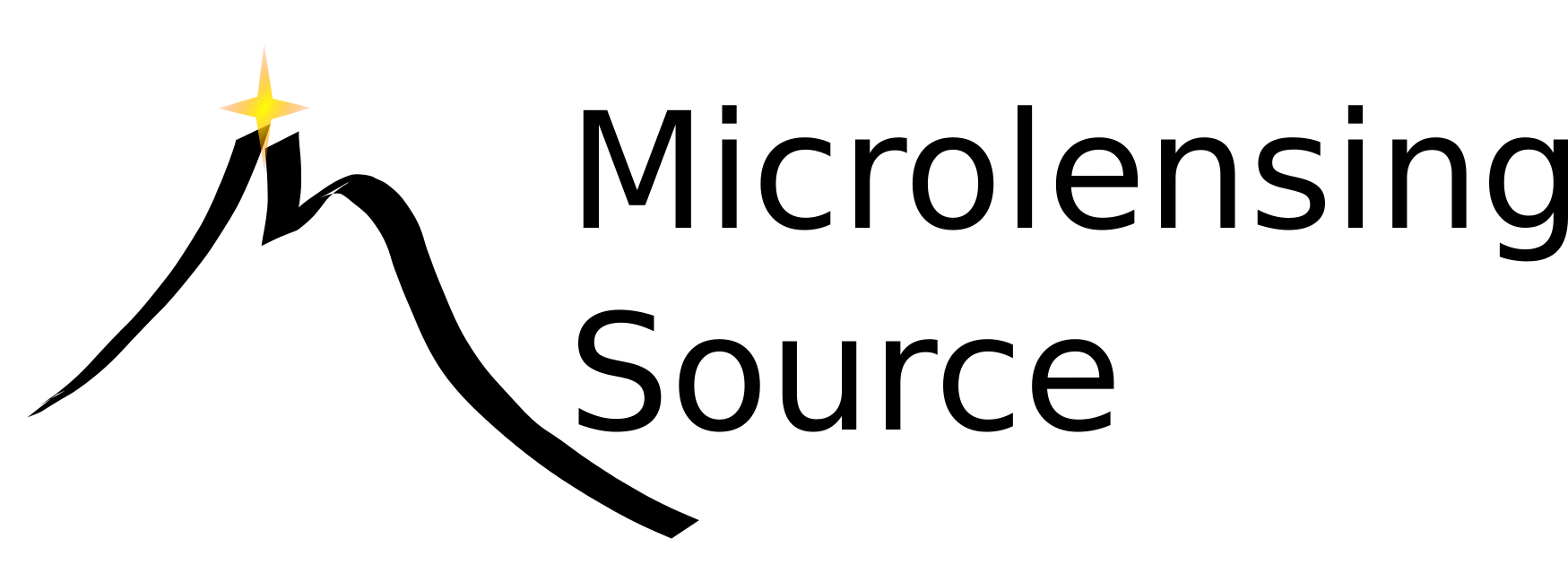
The microlensing community held a data challenge in 2018 with the aim of stimulating research into microlensing modeling in preparation for the Roman Mission.
Historically, the analysis and modeling of microlensing events has always been a computationally-intensive and time-consuming task, requiring a powerful computer cluster as well as well sampled lightcurves. While the number of interesting events with adequate data remained fairly low, it was practical to perform a careful interactive analysis of each one, often with the aid of a powerful computer cluster, but modern surveys are expected to produce terabyte and larger scale data products and thousands of microlensing detections (Penny et al., Johnson et al. 2020) and this approach will not scale. In addition, there are a number of outstanding challenges in microlensing modeling, particularly concerning the analysis of triple lenses.
The specific goals of the 2018 data challenge were:
The challenge was coordinated by Rachel Street and centered around a set of simulated lightcurves, produced by Matthew Penny, designed to reproduce the expected observing cadence, duration and noise model of the Roman Galactic Exoplanet Survey.
The challenge was announced at the annual microlensing meeting in New Zealand, and widely publicized. The whole community was invited to participate in the challenge, with newcomers to the field especially welcome. An open Data Challenge Github Project provided a platform for teams to form and collaborate.
The dataset included lightcurves from non-variable and variable stars, as well as both single and binary microlensing events of different types, and teams were challenged to identify the nature of the phenomenon causing the variability in each lightcurve. For microlensing events, they were expected to fit an appropriate model to the data, and to analyze as much data as possible before the submission deadline, October 31, 2018.
Each entry to the data challenge was required to submit a machine-readable table of fitted model parameters for all lightcurves in a standardized format to facilitate the programmatic analysis and comparison of the results by the evaluation panel. No modeling analysis was required for variables, but None entries had to be given rather than missing entries. For lightcurves classified as microlensing, the appropriate parameters had to be provided with uncertainties, including binary lens and second-order effect parameters where applicable. This reflects the fact that second-order effects are not always measurable, so weight was given in the evaluation to constraining the priority parameters well. The table included the time taken to model each lightcurve, from initial data ingest to final parameter output.
In addition, all entries had to provide written answers to the following questions to provide context which aided in the evaluation of their results.
Plots of all fitted lightcurves were encouraged with the model lightcurve overlaid, together with a plot of the lightcurve residuals as a function of time. Zoomed-in plots of any anomalous features were considered to be advantageous but not required. Plots of the lens plane geometry, caustic structures and source trajectory were also encouraged.
All entries were evaluated by a panel comprised of experts in microlensing theory and analysis, software and algorithms. No panel member was allowed to participate in any of the teams and all panel members were required to declare any conflicts of interest. All submissions were anonymized during the evaluation to minimize unconscious bias, and entries were judged quantitatively against the input parameters of the simulations.
The 2018 data challenge dataset can be download from here.
The dataset consists of two lightcurve files for each event or star, representing the data from Roman's W149 and Z087 filters. The files are in ASCII format with the columns BJD, Aperture_Magnitude and Error, and follow the file-naming convention: ulwdc1_nnn_[W149/Z087].txt
Supplementary files are also provided including wfirst_ephemeris.txt, which contains the BJD and 3D spacecraft location within the solar system. Information is provided on the surface-brightness color relation for Z087-W149 to enable lens masses to be determined where applicable.
It should be noted that in the simulated data, the inertial frame of reference is defined with the x-axis increasing from the binary center of mass towards the less massive lens at t0, the time of closest approach to the center of mass. If viewed from the solar system barycenter, the inertial frame moves at the relative velocity vlens_CoM – vobserver(t0). The inclination of the orbit is a counter-clockwise rotation about the x-axis. &alpha is the angle that the source trajectory makes with the x-axis (if parallax was 0). Where finite source effects are significant, a linear limb darkening law has been applied.
A number of software packages for microlensing modeling were made publicly-available to support entrant. Details of these can be found under the Software Tab
Tiffany Meshkat from IPAC kindly developed a Python notebook tutorial which provides an introduction to three public microlensing packages: PyLIMA, MulensModel and muLAn. This is a great way to get started if you're new to the field! Click here to download a tarball of the notebook, data and instructions, or visit the IPAC website
Four teams entered the 2018 challenge, including 7 people who were newcomers to the field, all of whom were successful in classifying and modeling the dataset using a variety of techniques.
A full overview of the challenge and the results can be found here and was presented at the Roman Science Team Community Briefing in 2021.